- Home
- Sue Monk Kidd
The Dance of the Dissident Daughter Page 22
The Dance of the Dissident Daughter Read online
Page 22
Feminine Pietá
That spring, after I ritually broke the yarn on my wrists, I began to create a refuge of healing. I had a dream:
I am wandering through a dusty old museum looking at statues of the divine. All of them are male. I wander a long time until I come to one of those hidden rooms that often turn up in dreams. Inside is a huge-lapped, marble statue of a seated woman. A Goddess. She looks very much like Mary in the Pietá who held the grown, crucified Christ in her lap, but this lap is empty. So I climb up into it, and to my astonishment the marble turns to warm, soft flesh. The Goddess comes to life and holds me, kissing my wounded places.
The dream suggested I seek a Great Lap, a place of feminine refuge where I could have my feminine stigmata healed. It informed me that I would find this healing space not by keeping my distance from sacred feminine experience, but by climbing right into the lap of it.
In the following months I began to climb more often into the lap of Sacred Feminine experience, to ground myself deeper and deeper within the healing “circle of trees.”
The Communal Basket, Female Solidarity
By now my friend Betty and I had found other women with whom we gathered from time to time to talk, listen, create rituals, and support one another. On a hot day in September five of us sat within the circle of trees at Springbank. Earlier we’d walked through the wood’s trails cutting long coils of wisteria vine with the intention of making a basket. Now we began to weave it.
Betty had woven baskets before and provided the instruction we needed, but much of it came naturally as we fell into a rhythm of passing the vine around the circle, each woman taking her turn braiding it in and out, over and under, then handing it on to the next woman. We talked about our lives as women, our fears, struggles, and hopes, offering our stories, receiving stories, and always weaving.
Weaving a basket is a lot like weaving solidarity; it’s similar to the way women braid their lives and stories and experiences together, making something solid, real, and beautiful—a woman-made container that holds you. I remember thinking, even commenting to the others, that the vines are like women’s arms, that linked together they can hold anything.
One of the most profound ways to engender energy for healing is through this kind of communal weaving. We wove our solidarity all afternoon until the sun dropped behind the trees. Somehow our basket turned out huge. I mean, huge. We laughed at the immensity of it. It could have held a large watermelon easily. The bigger the better, we said.
We beamed over our basket, basked in its presence. Then someone asked, “So what will we do with it?”
Do with it? Until now that hadn’t entered anyone’s mind. It must be true that when we are left to our natural selves, women are more engaged by the process than the destination or the end product.
We pondered. “We can pass it among us,” someone said. “It should go to the one who needs the most holding.”
So that’s what we did. To this day the basket moves back and forth among us. When one of us is struggling, she phones around. “So who has the basket right now? . . . Well, do you think she’s ready to send it my way?”
And the funny thing is, it works. The basket conjures up the solidarity and support we wove that day. It reminds us who we are and that we are not alone. The basket offers its “arms.”
As Mary Daly has acknowledged, “A minority of one has little chance of survival. The ‘bonding’ phenomenon among women, expressed by the word ‘sisterhood,’ is therefore essential. . . . Only women hearing each other can create a counterworld to the prevailing reality.”55
My earliest experience of solidarity goes back to an earthy childhood event with Sweet, the African American woman who was housekeeper for my mother and nanny to me. Growing up in the South before the Civil Rights movement, I saw caravans of black maids driven to and from work in the back seats of white women’s cars and “White Only” signs over restroom doors. But I really saw none of it. On Saturday afternoons I watched the matinee in the town’s only theater, only vaguely aware that above in the dark reaches of the balcony were people who were not allowed on the main floor because of their color. At eleven years old I was living inside the story of segregation without any consciousness of it.
Then one day as Sweet traveled in the car with my family, we stopped alongside the road for her to urinate, since she was not allowed in the gas station restrooms. As she took toilet paper from her purse and walked toward a privy of trees in the distance, I was struck as much as an eleven year old could be by the degradation and in humanity of what was happening. I wanted suddenly to be with her in the worst way, not to wait for the next gas station to relieve myself but to do it now with her. I bolted out of the car after her.
We squatted behind the trees, side by side on the slope of a hill watching our urine cut two golden paths through the dirt. It wound down until the streams converged like two tributaries coming together to form a river. Sweet said absent-mindedly, like she was commenting on a peculiarity of the weather, “Look how our waters run together.”
Even then I felt the hot rush of kinship with her, the unbreakable love, the way my life flowed into hers and hers into mine. I felt something of the pain of her life, had my first flicker of awareness that despite the differences between us, most of them forged by injustice, our lives ran together.
That is female solidarity—the squatting on a hill in mutuality, gazing down a common slope and seeing the way our lives make rivers together.
It is a telling postscript to that story that as I grounded myself in female community, I dreamed many dreams about Sweet. The one I most treasure is Sweet coming to me with a gold and silver box. “Here,” she said, “this is to keep your snake in.” She was speaking about my symbolic snake, the symbol of feminine wisdom, instinct, and female divinity, and I thought how appropriate it was that other women should offer us containers of value for this wounded aspect.
Like the communal basket, the image of squatting together on a Georgia hill is a metaphor of female solidarity. Both reminded me that coming together as women in both healing and transforming. It allows us, as Nelle Morton put it, to “hear one another into speech.”
The truth is, in order to heal we need to tell our stories and have them witnessed. “All sorrows can be borne if we put them in a story or tell a story about them,” said Isak Dinesen, a writer who had plenty of sorrow and told stories to bear it.56 The story itself becomes a vessel that holds us up, that sustains, that allows us to order our jumbled experiences into meaning.
As I told my stories of fear, awakening, struggle, and transformation and had them received, heard, and validated by other women, I found healing.
I also needed to hear other women’s stories in order to see and embrace my own. Sometimes another woman’s story becomes a mirror that shows me a self I haven’t seen before. When I listen to her tell it, her experience quickens and clarifies my own. Her questions rouse mine. Her conflicts illumine my conflicts. Her resolutions call forth my hope. Her strengths summon my strengths. All of this can happen even when our stories and our lives are very different.
Solidarity is identifying with one another without feeling like you have to agree on every issue. It’s unity, not uniformity. It’s listening without rushing in to fix the problem. It’s going deeper than typical ways of talking and sharing—going down to the place where souls meet and love comes, where separateness drops away and you know these women because you are these women.
I began to meet often with groups of women, at Springbank when we stood in a circle and fed each other little crescent slices of apple, saying, “The fruit of the earth is good and you are good,” or outside beside Betty’s lake as two or three of us gathered to talk. Over and over these women caused me to see that the circumference of my life was much larger than I had imagined. They listened to me as I struggled to expand my world. They heard me into speech and loved me into healing.
On the Bridge
When winter cam
e, Sandy and I went to a Jungian conference in the mountains of North Carolina. One morning we walked through the woods around the lake. A snow had fallen overnight, and everything was molded white. As we walked, we talked about lots of things—feminism, dream symbols, his new course of study. The air stung with cold, but we hardly seemed to notice.
After a while we came to a little footbridge that arched over a stream, and we stood in the middle of it, leaning on the rail. I was telling him something about the importance of the Divine Feminine in my life, how important it was for women to internalize her. He was nodding. He was nodding in such a way that I was struck suddenly by the depth of his support for me and for what I was doing.
“The culture needs feminine spiritual consciousness,” he was saying. He went on, but all I could think was, Would you look at us! Who would have ever thought we would be standing here talking like this? More and more we’d been sharing a new intimacy. I thought of the evenings we had talked about the Ariadne myth and what it meant. Evenings when we had talked just as we were talking now. I realized how much he had tried to understand me and what all this meant to me. And wasn’t he the one who lately, whenever the children said “he” and “his” when talking about God, reminded them that the Divine could also be a she? And wasn’t he the one who’d given me the deer antlers and not so long ago brought home a candle for my altar?
But it wasn’t until that moment on the bridge that I stood back and took it all in. Amazing, I thought. And I felt somehow that something had been healed between us.
Silence came as we leaned over the rail and watched the water trickle by. It seemed exactly right that we were on a bridge, and when we walked on, I felt like the two of us were in a whole new place.
Deep Being
We are also healed through experiences of Deep Being or what might be called “being at the core of oneself.” When we exist at the core of ourselves, we’re departing from how we normally exist. We’re bringing the heart, mind, body, and soul into focus and being present with them in a particular way: doing it on purpose, doing it with unconditional acceptance, and doing it with deep attentiveness.
Deep Being is a kind of meditation for the female soul, for such experiences provide a woman with the time and space she needs to create a new relationship with her inner Feminine Self and mend the fragmented places inside.
How do you practice Deep Being? How do you go to the core of yourself and be? There are as many ways as there are women.
Each woman must create her own ways, but it can be helpful to discover the kinds of things other women do in order to heal, for they show us what is possible and direct us back into the passion of creating our own healing sanctuaries.
JUNGIAN WORK My first experiences of Deep Being had begun with Jungian analysis. Week after week, month after month, I sat in the little solarium in my analyst’s house trying to gather my soul into focus and be with it, trying to enter the deep of myself. Many times I felt like a child at the edge of the sea, sticking in one toe and then running for the dune before gaining courage to wade on in.
The sessions with my analyst were like talking meditation, for the dialogues seemed to be holy discourse created for the purpose of opening the soul to its truth. In the presence of a skilled and caring woman, I plumbed my wounds, looking at the roots from which they rose, gradually finding my way toward healing. I gained help in naming and dismantling inner patriarchy and freeing myself from the old faces of daughterhood. The process assisted me to lay my hands on Big Wisdom and follow my thread. Most of all, it helped me forge a connection to my Feminine Self.
Sometimes my sessions were like therapeutic show-and-tell as I brought in written accounts of dreams I’d had, drawings I’d sketched and clay images I’d sculpted, writings I’d done, illustrations of the myth of Ariadne, childhood pictures, the deer antlers Sandy gave me. These and so many other small treasures became symbolic lenses through which my soul was brought into clearer focus.
One day I brought in a walking stick. I’d made it from a slender tree limb that had fallen from one of the branches in the circle of trees at Springbank. This would make a wonderful walking stick, I’d thought when I found it, and I took it home without a clue about how to make one. The next couple of weeks I sat night after night on the floor in the den, stripping off the bark with a little whittling knife until my thumbs were puckered with blisters. When I finished, I gathered up all the shavings of bark and saved them in a glass bottle. I varnished the stick and took it with me when I walked. It became a cherished thing.
Then one day I brought it with me to the solarium, and we talked about the process I’d gone through creating it. I began to see that it was not unlike the process I was experiencing, the blistering work of stripping away the old brittle layers in order to reach the beautiful grain of the female soul. The gathering up of the old fragments because transformation comes not by rejecting unwanted parts of ourselves but by differentiating then integrating them. And finally making the whole thing part of my walk.
I knew suddenly the ways of my journey. The impact and changes that my experience had brought slipped into focus. It was one of those moments of coming together.
When I teach creative writing classes, I always tell my students about what writer James Joyce calls the “epiphany” of a story. It’s a moment of enlightenment or recognition when the character comes to realize something, to see something in a new light, and from then on the character’s internal landscape is changed. It’s worth noting, I tell them, that epiphany actually means a physical manifestation of something, so the character’s internal realization comes through some tangible thing or outside action. In much the same way, the feminine journey is a story unfolding, and its epiphanies come through real things, through tangibles like walking sticks and dreams and deer antlers—all of which we might miss without taking time and space in Deep Being.
Of course, not every woman needs to be in Jungian analysis to travel a feminine journey, but we all seem to need at least one refuge of Deep Being where we have the ongoing freedom to tell our truth safely and truly be heard, where we can find the support we need to follow our thread, where the epiphanies can come. We need a place that will help us find the grain beneath all that bark.
We can accomplish it perhaps with a friend or special group, through a journal, through prayer, or through a creative work. The important thing is to find a process that works for you, that allows you to give yourself times of unconditional presence when you can attend your soul with all the acceptance and attentiveness you can muster.
THE PRACTICE OF MINDFULNESS That winter while in a bookstore I picked up a book on mindful meditation by Zen master Thich Nhat Hanh. As I read it, I was drawn into the practice and discovered it to be another powerful experience of Deep Being.
Mindfulness is an ancient form of meditation in which one pays attention to the present moment and all that’s unfolding in that moment, both within and around one. It’s known also as conscious living because the person practicing it is forming an aware and intimate relationship with each moment.
I began to sit in a calm, accepting alertness for twenty to thirty minutes each day. I became attentive to my breath, noting the thoughts and feelings that arose, observing them the way the sky observes the clouds and lets them pass through. In this way I was able to bring attention to the content of my life as it was unfolding.
Mindfulness has been called a powerful form of self-healing by many teachers and practitioners.57 How this process creates healing is part mystery and part grace. Somehow in a slow, hidden way, we’re able to be with the depths of ourselves—our true natures, our souls—while at the same time observing our thoughts and feelings and not becoming caught up in them.
When practicing mindful meditation we aren’t striving to do anything. We aren’t grasping, struggling, thinking, expecting, or wanting but simply letting whatever is there be there and paying attention to it in a nonjudgmental way. We come to terms with reality as it is,
bringing all our awareness to it, breathing with it, attending it.
This might sound easy; it’s anything but. It took six months before I could sit for any length of time without traipsing off into the endless stream of thought and chatter in my head. I would realize suddenly that I’d completely lost my concentration, my awareness of the breath, any sense of the present moment, and I would have to call myself back a million times.
I like meditation teacher Jack Kornfield’s analogy. He says when you start to meditate your mind is like a puppy you’re trying to house-train. You place it on a piece of newspaper. “Stay,” you tell it. “Stay.” But does it stay? Of course not. It wanders off, and you have to bring it back. It doesn’t help to punish the pup. The pup learns by being gently brought back over and over again.
From Thich Nhat Hanh I learned a way of being with my wounds while practicing mindfulness. He suggests that as feelings arise we acknowledge them. Yes, I’m feeling this. Then, he says, get even closer to the feeling. Rather than saying, “Go away, fear” or “anger” or “hurt,” greet it, because banishing our feelings will not transform them.
He suggests we approach pain the way a mother tenderly picks up a crying baby. The mother represents your mindfulness, your true nature, the conscious, attending part of you. The squalling child represents your pain, the wounded part of you. When the pain makes itself felt, you can gently pick up the child and hold it.
All that winter and into the spring, I kept picking up the child during my meditation—all the personal and collective fear, anger, betrayal, and internalized sense of inferiority that make up the feminine wound—and holding her in my arms. It got to the point that when the wound made itself felt, I found myself naturally responding, “Oh, there you are again, I know you. Come on and I’ll hold and rock you for a while.” Eventually the baby stopped crying.
Once we get the baby quiet, we can begin to look deeply at the feeling. We begin to understand the attitudes, beliefs, and patterns that cause it. We start to see what keeps us stuck in our wounds and what we can do to transform them.

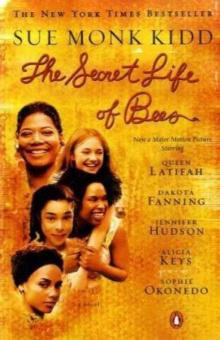 The Secret Life of Bees
The Secret Life of Bees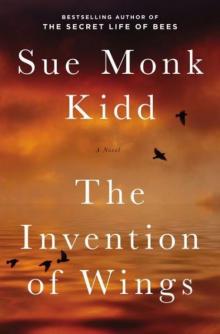 The Invention of Wings
The Invention of Wings Traveling With Pomegranates
Traveling With Pomegranates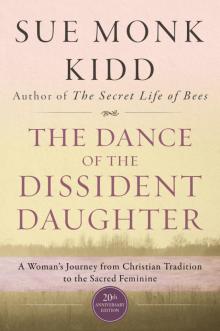 The Dance of the Dissident Daughter
The Dance of the Dissident Daughter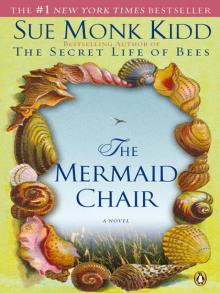 The Mermaid Chair
The Mermaid Chair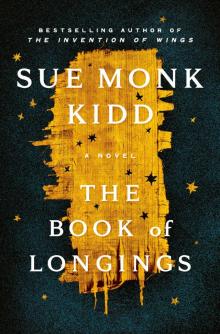 The Book of Longings
The Book of Longings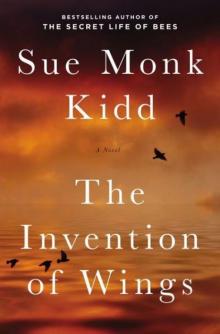 The Invention of Wings: A Novel
The Invention of Wings: A Novel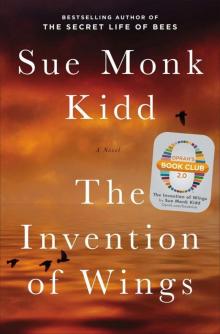 The Invention of Wings: With Notes
The Invention of Wings: With Notes